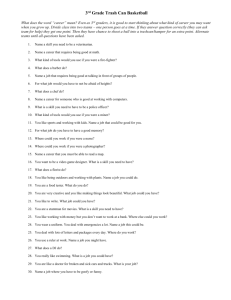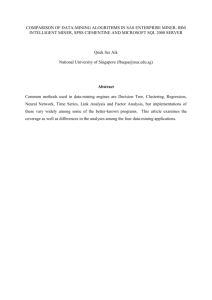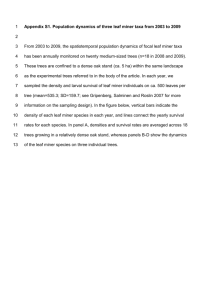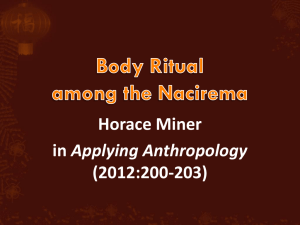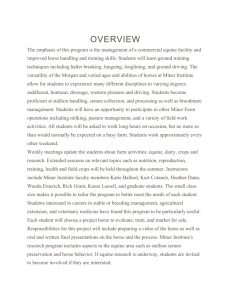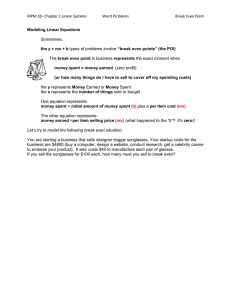Riding a new wave of renewables
advertisement
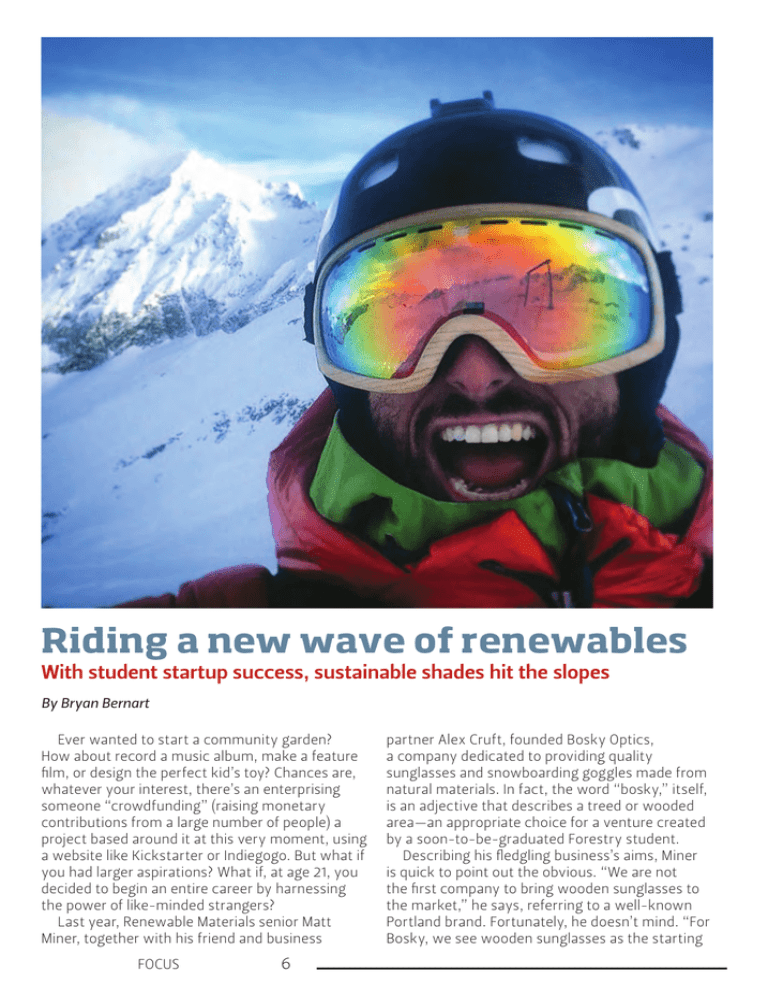
Riding a new wave of renewables With student startup success, sustainable shades hit the slopes By Bryan Bernart Ever wanted to start a community garden? How about record a music album, make a feature film, or design the perfect kid’s toy? Chances are, whatever your interest, there’s an enterprising someone “crowdfunding” (raising monetary contributions from a large number of people) a project based around it at this very moment, using a website like Kickstarter or Indiegogo. But what if you had larger aspirations? What if, at age 21, you decided to begin an entire career by harnessing the power of like-minded strangers? Last year, Renewable Materials senior Matt Miner, together with his friend and business FOCUS 6 partner Alex Cruft, founded Bosky Optics, a company dedicated to providing quality sunglasses and snowboarding goggles made from natural materials. In fact, the word “bosky,” itself, is an adjective that describes a treed or wooded area—an appropriate choice for a venture created by a soon-to-be-graduated Forestry student. Describing his fledgling business’s aims, Miner is quick to point out the obvious. “We are not the first company to bring wooden sunglasses to the market,” he says, referring to a well-known Portland brand. Fortunately, he doesn’t mind. “For Bosky, we see wooden sunglasses as the starting point. It’s the first step on our way to creating something much bigger.” But with stiff competition, even in his home state of Oregon, how does Miner plan to set Bosky apart from the pack? “We’re working to become the first brand that creates a comprehensive line of goggles and sunglasses that are not only made from renewable materials, but also designed in collaboration with artists and professional athletes, effectively turning our wooden frames into a canvas,” he says, before adding mischievously, “no other company is doing this. It’s our ‘secret sauce,’ if you will.” In the beginning, Miner and Cruft decided to launch their endeavor using Kickstarter because it seemed like a good way to learn about their market, as well as test their products. “It was useful as a means to reach our potential customers, and we are actively planning a second Kickstarter campaign, launching later this year, to promote our snowboarding goggles,” Miner says. “Our backers [contributors, who often receive a product or promotional materials in exchange for funding a campaign] were also great about giving us feedback on how we could improve our sunglasses,” he adds, implying that early adopters actually function as a kind of focus group/customer hybrid. Speaking as a forestry student, Miner says that the response from his cohort has been largely positive. “I think it excites them to imagine how they could launch companies, themselves,” he muses. “When you go into business, which is a fairly open-ended field, it’s difficult to figure out where to start. However, visualizing what you want is really all you have to do—once you have an image of your goals, you just work out the steps between where you are and where you want to be.” After graduating this spring, Miner intends to continue in entrepreneurship, sustaining himself on his shared business venture alone. “We’re right at the point where we can begin working with bigger name retailers and some larger distributors that can take us to the next level,” he says. Miner and Cruft are currently navigating Bosky through its first winter buying season for both its sunglasses and goggles. If their website is any indication, things are going well: Bosky was recently featured in the South Korean editions of Vogue, Cosmo, and Harper’s Bazaar, and an Italian hiker even tested Bosky’s goggles in Antarctica. “Before I began in the OSU Renewable Materials program, I didn’t realize all of the potential applications for wood-based products,” says Miner. “It was a privilege to work under Dr. Fred Kamke (JELD-WEN Professor of Wood Based Composites Science) and learn more about those, as well as the properties of wood, itself, and how they can be modified under heat and pressure. I was initially ignorant of the industry and thought that Renewable Materials was just about plywood and dimensional lumber, but that’s not true at all—there are so many possibilities.” Miner says that being an RM student has also inspired him to create products using other materials, such as hemp and plant-based plastics. “I really do feel an obligation to make things that work in harmony with the environment,” he says. “While calling something ‘green’ can be a simple way to generate sales, I’m more interested in creating a product that really inspires people to see the possibilities that natural and alternative materials can offer, on their own merits—this is amazing stuff.” 7 OSU College of Forestry
